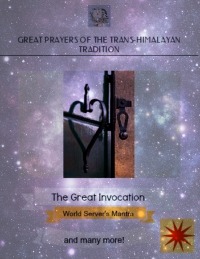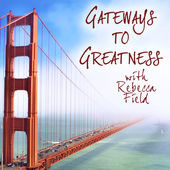
Hope
HUNGER IN LENINGRAD
Few who are now alive remember the siege of Leningrad. It was one of the most devastating massacres to occur during World War II or what the Soviets called ‘The Great War.’ Probably more than in any city in the Soviet Union, Leningrad suffered the most. What happened there has been condemned by most of the rest of the world as inhumane, an act of genocide. For the Nazi war machine, the strategy was figuratively to put a noose around the neck of the great city.
This story is close to my heart because I had the good fortune to go to what was then the Soviet Union and visit Leningrad. The group I was with visited the Piskariovskaya Cemetery. Just to be surrounded by literally millions of the dead who lived in the city must be one of the most sobering incidents of my life. This story was told to one of the ladies in the group by our tour guide. I asked a fellow traveler if she had heard a story about one of the residents of the city. She later told me the following story.
The city of Leningrad is so far north that it straddles the Arctic Circle. It gets unthinkably cold there in the winter. Colder even than -40 degrees Celcius! During the siege which lasted from September 1941 to January 1945, a siege of 872 days, almost four and a-quarter years, more than a million-and-a half people died of starvation, lack of water, medical help and basic supplies necessary for life. The enemy would not allow food or supplies to come in to the city, so the Soviets, as they were known at that time, hunkered down and were determined to survive no matter what.
The Nazis blockaded the great city, known prior to the war as Saint Petersburg. Nazi military strategists calculated that a blockade of the city of about 3,000,000 residents in 1940 was the fastest and least costly way for them to take the city. After all, it would give the Nazis control of northern Russia and a sizable portion of the Arctic and its vast natural resources. When the war ended in 1945, one and-one-half million civilians had lost their lives. Most of them were buried at Piskariovskaya Memorial Cemetery on the outskirts of the city. The mounds where masses of the dead were laid to rest are amazingly immense, and serve as stirring reminders that humanity must do everything possible to end war.
* * *
An old woman who lived in Leningrad at the time of the siege had become the poorest of the poor. It was toward the end of the third year of the siege and all her family died from starvation. For many months she had suffered terrible hunger pangs, depression and fear. Her fellow comrades refused to give up. How could she? She went out into the streets one particularly cold day in March in search of food. She walked a long way in search of a morsel of nourishment.
She realized how weak she was and headed back to her grim, cold apartment that was home for the past year. She shared the space with strangers. Freezing temperatures had broken the water pipes in her building. As a result of freezing temperatures, Katerina had no running water. Her vision blurred. She knew but barely grasped the fact that she was desperately malnourished. As she trudged home, she had to squint to see what was on the ground. She bent over to get a better view and found ice crystals in the frozen mud—just what she expected. As she looked more carefully, she saw some morsels of grain. “It’s probably wheat,” she thought to herself. ”I’ll try it.” With difficulty she got down on her knees in the cold ice-laden dirt and started to lap up a few crumbs of grain still hidden in a pile of snow.
She looked around and saw no one coming, so she could claim what she found as her own. When she finished, she could find nothing she could use to pull herself up, so she crawled on her bare knees closer to the pile of snow, hoping it was hard enough to support her as she braced herself on it and tried to stand. She fell backward into ice and slush, which quickly made it its way through her heavy coat to her back. She panicked. Her face was dirty with mud and slush. She could hardly see with dirt in her eyes. She lay face up and realized that her immediate danger was freezing to death. Cold and shivering, she lay there for what seemed hours, hoping that someone would come along and help her to her feet.
An elderly man trudged by. He was obviously weak, but managed to help her to her feet. He walked her home. The next week when he came by to see how she was, he found that she had died the day after he had found her. Absorbing the Magnitude of the Crisis of Leningrad was difficult.
“The Great War” and the siege of Leningrad gave all who were alive at the time the opportunity to look at themselves through the horrendous experience of Soviet citizens of that brave city. During the 872 day blockade of the city of about 3,000,000, about 50% of its population died. Many are interred in the Piscaryovskaya Memorial Cemetery outside the city.
Since that time, humanity has rebuilt countries and cities all over the world that were touched by the violence of war. Perhaps because we wanted to recreate life as it was before the war, we didn’t take the time to think or feel the magnitude of what happened during the World War. We didn’t realize that ‘the good old days’ would not, indeed, could not, ever return, nor did we really take the time to make ourselves aware of what we were doing, nor to understand what really happened at a higher level in that immense global conflict.
In looking back it is evident that the war was a serious crisis for humanity, even though it was not a crisis in leadership, in nations or even in organizations. The crisis was something entirely different from any war in the past. We were forced to look at the dying embers of entire civilizations, only to find that our old ways of thinking and doing were obsolete. The familiar patterns and structures we had become used to were worn out. Whole civilizations, cultures and societies were so badly frayed and dilapidated that they could no longer be repaired.
The World War (1914 to 1945) in reality lasted several generations and during that time humanity as a whole grew up to the point that we were able to think, instead of being emotional. Proof of the mentalization of humankind was in the development of the great ideologies of the Nineteenth and Twentieth Centuries: Capitalism, Communism and Democracy. The World War congealed the human drive to destroy, which, more than any other thing, was the cause of what the Russians came to call ‘The Great War.’ Further, humanity has always had a tendency to be separative, a weakness that will eventually be overcome as we learn love and compassion.
Now more than seventy years after the end of the Great War, we find all kinds of breakthroughs occurring in every sector of human endeavor, from the eradication of extreme poverty to the upsurge of the feeling of imperative buoyancy in the face of the difficulties we experienced in the early Twenty-first Century.
The green movement and the love of the earth sparks eco-regeneration and cooperation. It is an effort to change from a materialistic value system to a planetary and human centered value one, which demands that each one of us takes responsibility for our share of what must be done for all of us to survive.
Our concern must be for planetary good as well as the assumption of our accountability and duty to and for humanity. A movement is like a wave gracing people on all continents and every country moves us to realize that we each have a human responsibility to care for the planet as it nourishes and cares for us as well as the rest of the human race, with each individual deserving her or his basic human rights and basic needs to be met.
We find ourselves a whole unit who must stand for peace and justice, healing and regeneration as we discover solutions to age-old problems and engineer first-time breakthroughs that are jaw-dropping achievements.
Every day we experience social death and decay, and a desperate kind of hunger that mandates order, peace and justice, we also develop the capability to survive the current siege just as those in Leningrad did. Do we understand yet that the entire planet and its inhabitants are in the midst of the biggest transformation humanity has ever known?
Look around; we seem to have lost the values that our old social structure rested upon. The depth of the social collapse results in waves of violence, hate and ubiquitous terrorism. We either drown or nearly burn to death in human-designed and executed ‘perfect storms’ that shatter ancient societies like Japan, Indonesia and Nepal.

The Appearance of the New
The question we all have is, can we cope with the multitude of changes occurring around us? If so, how are we to do that? If we can’t, then what do we do? One of the newest things to have come along in the last century is the rise of groups.
Group work has become an imperative and it is still very difficult because our egos—our small selves—find it so hard to get things done when we have to work together. We’ve been at it now for over a century. The rise of the Green movement is one thing that is forcing us to feel differently, and act with more patience, inclusiveness and compassion than before.
What has to happen in groups for the members to function at all is that they have to be willing to work from the standpoint that breakthroughs, inventions, new social norms, and a host of other positive things will come forth in the future.
Somehow the group mind, as it thinks, discusses and works together and over time makes a leap. Those in the group begin to intuit what we might call the group field or energy that radiates from an atom or an idea. A group field can be conceived of as being similar to a molecular field because it is made up of a number of different members.
For instance, an example of a group field could be something like NASA headquarters which monitored, managed and organized the moon flights and the return of the space travelers safely back to earth. It could not have been done without working in groups. The group field also involves a real or implied movement in and through space which includes human mental space and atomic space. Working in a group implies shared greatness and the willingness to share and give credit to others.
Somehow the group, as it thinks and acts as a unit, discusses and works together over time, makes a leap. Those in the group intuit the group field. When this leap occurs there is a marked difference in the quality of the members’ thinking and acting.
They connect with a reservoir of creative energy. They seem to move from the archetypes of the past almost instantaneously and simultaneously to the deeper qualities of love and freedom and the power of the authentic self.
As they do so they solve huge problems.
* * *
Copyrights Rebecca Field
The above is an excerpt of the book: Greatness; 21 Compelling Stories That Open The Heart, Chapter 17 Available on Amazon










